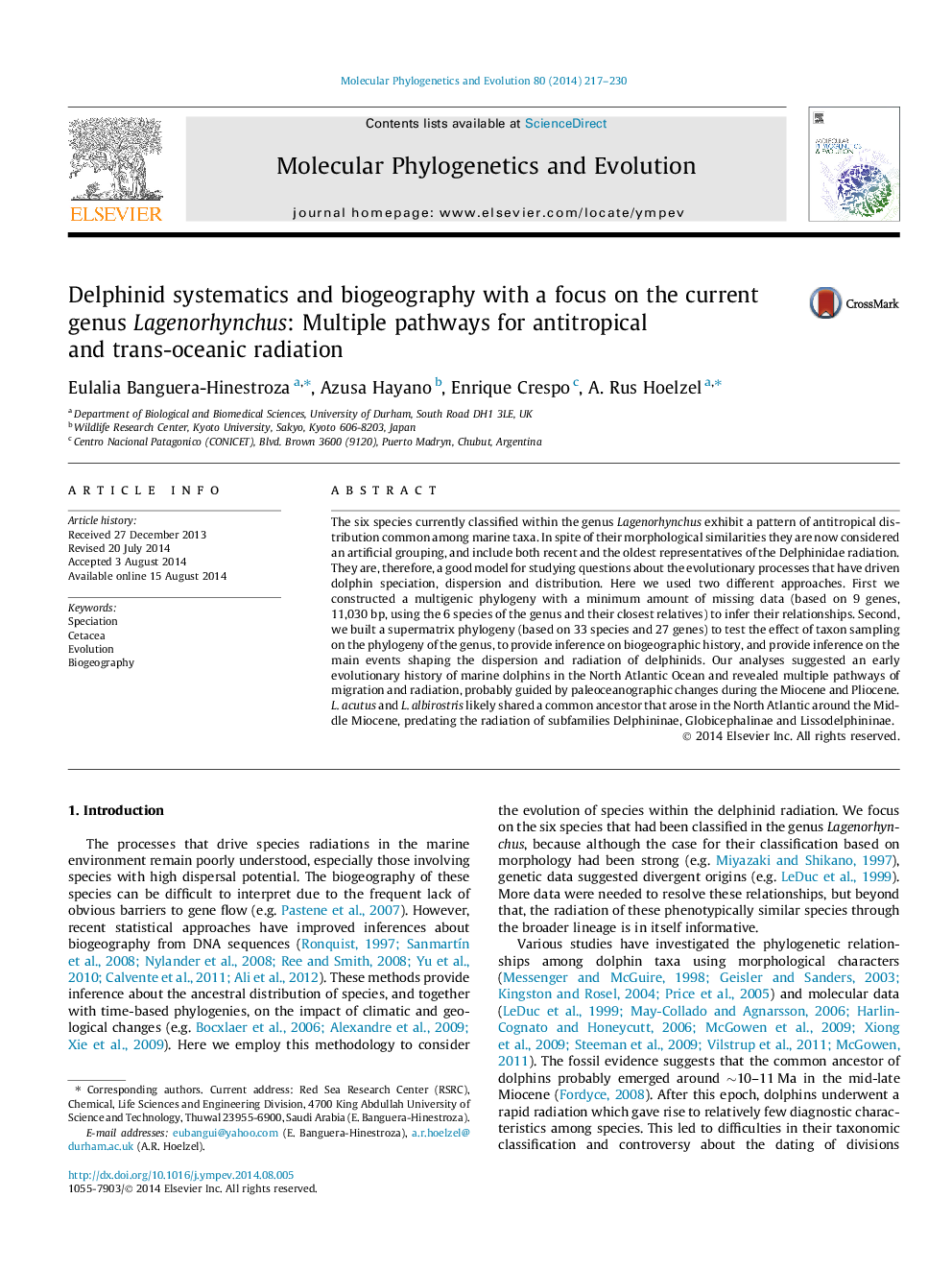| Article ID | Journal | Published Year | Pages | File Type |
|---|---|---|---|---|
| 2833816 | Molecular Phylogenetics and Evolution | 2014 | 14 Pages |
•A high resolution phylogeny of species in the genus Lagenorhynchus.•A supermatrix phylogeny including most delphinid species based on 27 loci.•Biogeographic inference in the context of environmental change.•Results suggest multiple pathways of migration and radiation from the North Atlantic.
The six species currently classified within the genus Lagenorhynchus exhibit a pattern of antitropical distribution common among marine taxa. In spite of their morphological similarities they are now considered an artificial grouping, and include both recent and the oldest representatives of the Delphinidae radiation. They are, therefore, a good model for studying questions about the evolutionary processes that have driven dolphin speciation, dispersion and distribution. Here we used two different approaches. First we constructed a multigenic phylogeny with a minimum amount of missing data (based on 9 genes, 11,030 bp, using the 6 species of the genus and their closest relatives) to infer their relationships. Second, we built a supermatrix phylogeny (based on 33 species and 27 genes) to test the effect of taxon sampling on the phylogeny of the genus, to provide inference on biogeographic history, and provide inference on the main events shaping the dispersion and radiation of delphinids. Our analyses suggested an early evolutionary history of marine dolphins in the North Atlantic Ocean and revealed multiple pathways of migration and radiation, probably guided by paleoceanographic changes during the Miocene and Pliocene. L. acutus and L. albirostris likely shared a common ancestor that arose in the North Atlantic around the Middle Miocene, predating the radiation of subfamilies Delphininae, Globicephalinae and Lissodelphininae.
Graphical abstractFigure optionsDownload full-size imageDownload as PowerPoint slide
